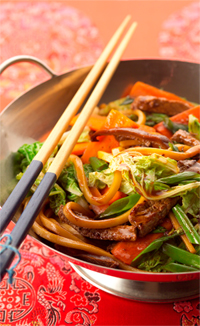
What used to seem like exotic ethnic foods, such as sushi and tamales, are now standard fare in many grocery stores—and on many shoppers’ dining room tables.
According to Mintel, a global market research firm, ethnic foods now account for over $8.5 billion in retail sales each year, a number that’s expected to grow to over $10 billion by 2017. As shoppers look for more adventurous flavors, more and more ethnic foods are likely to show up as featured items during in-store events.
The first step for Sales Advisors in getting ready to sell a new product is to read the full product packaging. For ethnic foods, look for terms like “traditional” and “authentic,” and check to see where a product is made. If a mole sauce is made in Mexico, where the dish is originally from, let shoppers know about it. According to a report from Mintel, 65 percent of shoppers say authentic or traditional flavors are the top consideration for buying or eating ethnic food.
Highlighting the health benefits of ethnic foods is another good way for the front-line sales team to engage shoppers. For example, according to the Institute of Food Technologists, ginger, common in Asian foods, reduces muscle pain, while cinnamon, found in many Mexican sauces, may help maintain healthy blood sugar levels. In addition, the generous use of spices in many ethnic dishes reduces the need for added salt and fat, without sacrificing flavor.
Finally, keep in mind that the target audience may be different than the regulars who always visit in-store events. A recent report from Mintel showed that 90 percent of Americans age 25 to 34, and 91 percent of families with children at home report having cooked ethnic food in the last month. So by making a special effort to reach out to young adults and families, Sales Advisors can open the discussion with this audience on the new, flavorful and authentic treats currently being demonstrated.

